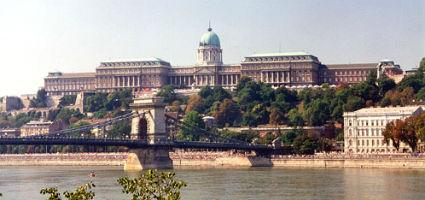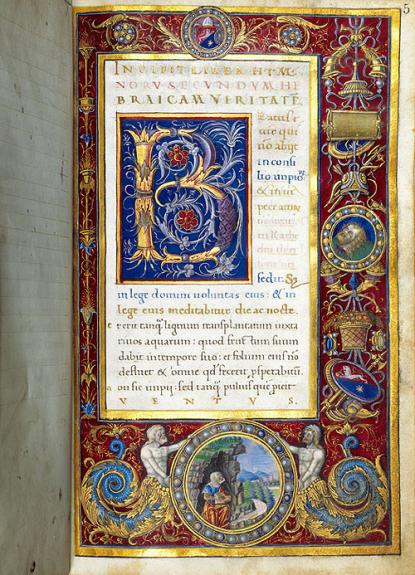2024. April 19. Friday
National Széchényi Library - Budapest
 |
Address: 1014, Budapest Budavári Palota, F épület
Phone number: (1) 224-3742
E-mail: inform@oszk.hu
Opening hours: Tue-Sat 10-18
|
The exhibition has closed for visitors.
2008.11.21. - 2009.03.29.
Museum tickets, service costs:
|
Group ticket
(over 10 people)
|
300 HUF
|
/ capita
|
|
Ticket for adults
|
1000 HUF
|
|
|
Ticket for students
|
500 HUF
|
|
|
Ticket for pensioners
|
500 HUF
|
The Holy Scripture is one of the bases of universal culture. It influenced national cultures for centuries. Reading the Holy Scripture permeated ideas of Christian peoples, language and morals. Just like in many other countries, translations of the Bible played the most important part in the formation of language and development of terms.

Our exhibition follows the history of the Hungarian Bible. The Bible itself has been part of Hungarian history over a thousand years now. The first Hungarian Bible translations were vocal. However, linguistic accounts betray that the essence of the Holy script was unchanged through centuries. The first book written entirely in Hungarian published abroad and the first book published in Hungary were Bible translations.
The exhibition presents famous copies of Latin and Biblical codices written in beautiful Hungarian language, the Vienna Bible belonging to the so-called Hussite Bibles, the Jordánszky and Érdy codices, as well as the oldest Vulgata manuscripts to be found in our libraries. Bibles that once belonged to outstanding personae of Hungarian history are of curiousity: Janus Pannonius, Balassi family, Kazinczy Ferenc, Ady Endre, Móricz Zsigmond, József Attila, Babits Mihály, Jékely Zoltán, Szerb Antal, Illyés Gyula, Ottlik Géza, Pilinszky János etci.
The Biblia Sacra Hungarica is not simply a publication. Several equipments make the Biblical researches on content and educational history more attractive to the visitors who thus turn out to be not only viewers but also organizers. The central room is set as a church interior. The last unit is like an old classroom. The telephone booth lands "hand" with quotations from the Bible providing an unusual interactivity for the visitors.
Hungarian translations of the Bible that could not be shown can be studied on computers. The visitors can also experience the correlation of the Bible, the Hungarian language and various genders, such as ethnography, applied art etc.

Our exhibition follows the history of the Hungarian Bible. The Bible itself has been part of Hungarian history over a thousand years now. The first Hungarian Bible translations were vocal. However, linguistic accounts betray that the essence of the Holy script was unchanged through centuries. The first book written entirely in Hungarian published abroad and the first book published in Hungary were Bible translations.
The exhibition presents famous copies of Latin and Biblical codices written in beautiful Hungarian language, the Vienna Bible belonging to the so-called Hussite Bibles, the Jordánszky and Érdy codices, as well as the oldest Vulgata manuscripts to be found in our libraries. Bibles that once belonged to outstanding personae of Hungarian history are of curiousity: Janus Pannonius, Balassi family, Kazinczy Ferenc, Ady Endre, Móricz Zsigmond, József Attila, Babits Mihály, Jékely Zoltán, Szerb Antal, Illyés Gyula, Ottlik Géza, Pilinszky János etci.
The Biblia Sacra Hungarica is not simply a publication. Several equipments make the Biblical researches on content and educational history more attractive to the visitors who thus turn out to be not only viewers but also organizers. The central room is set as a church interior. The last unit is like an old classroom. The telephone booth lands "hand" with quotations from the Bible providing an unusual interactivity for the visitors.
Hungarian translations of the Bible that could not be shown can be studied on computers. The visitors can also experience the correlation of the Bible, the Hungarian language and various genders, such as ethnography, applied art etc.
